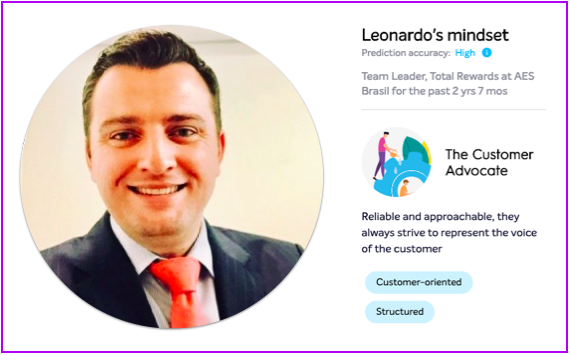Welcome to the first edition of our new expert series, where we interview some of the world’s leading experts on people analytics, culture, and organizational development. Our very first guest is Leo Citro, VP of Global Talent Management and People Analytics at The AES Corporation, a Fortune 500 company in the energy sector.

CULTURED: Leo, what does a day in your life look like?
LC: It varies! I oversee talent management, workforce planning, analytics, and recruiting, but each of those areas has a team lead, so my role is primarily to make sure the vision is there for my team and to empower them to be successful. So, a lot of my time is spent planning for the future, but also on budgeting and stakeholder management too.
CULTURED: Talent management is a focus of yours. How has it changed with the rise of people analytics?
LC: Talent management has traditionally been quite a subjective discipline, so it requires more work than other areas to truly become “data driven” in your approach. For instance, take succession planning as an example: in several companies, this used to be done by leaders in a closed room who would discuss and make decisions based largely on their opinions. An analytics-driven approach is a big change, but it’s also why there’s a lot of opportunity to improve decision-making. It’s exciting.
CULTURED: How does a large company like AES get started with using people analytics?
LC: It tends to be part of a wider initiative. With AES specifically, we’re in the energy sector. If you look at how our industry functioned 10 years ago and compare that to 100 years ago, there wasn’t that much of a difference. But all of a sudden in the last 10 years, everything has changed. We’re using AI in operations. We’re using drones in maintenance work. We’re moving towards using smart meters in utilities. Suddenly we’re living and breathing analytics, and it spreads to all areas of the business, including HR.
CULTURED: What advice would you give to a team starting on the people analytics journey?
LC: I think in getting started, what I’d really emphasize is making sure you know where you’re trying to go, and maintaining a big-picture view of what you’re trying to accomplish. Above all, you need to have a framework and avoid getting lost in the weeds.
CULTURED: What are you focused on now in terms of your people analytics strategy?
LC: We’re trying to simplify. We’ve learned that you can have 100 KPIs, but ultimately what you need is to come up with actions, so it’s about getting the most relevant information possible at the right time – not just having a lot of numbers in front of you.
In addition, now that we’ve been using analytics for a while we’re also able to do some really interesting analysis. We can look back and see if those people we hired 2 years ago were actually the right people for us, and learn from that. We’re moving beyond “what can we measure?”, and asking instead “what can we influence?”.
CULTURED: What’s next for your team in terms of analytics?
LC: We want to keep moving in the same direction, focusing on improved decision making. One specific example is that we’ve built our own dashboards in Qlik Sense based on data from Workday, and it’s been helpful, but we still want to do more to make sure we always understand the context to make the right decisions.
We don’t just want KPIs and stats, we want to know why. For example, if our time-to-hire is too long in recruiting, we need to quickly understand if it’s because, for example, that hiring managers are taking too long to set up interviews? Is it because candidates are dropping out? And if it’s the latter, why? Do we need to revise our compensation plan?
We have access to all of this information now, but it’s a manual process. We want it to be more automatic.
CULTURED: With that in mind, what’s your vision for the future?
LC: I think dashboards will disappear. I think the People Analytics solutions of the future will be much less about presenting data, and much more about zeroing in on the most relevant information to give the user the exact information they need to make a decision. The data itself will fall into the background.
In addition, I think predictive analytics is a big part of the future. I want to be able to see potential problems 5 years in advance. I want to know: if I spent $10 million on training this year, what impact will that have on the organisation in 5 years? What will it mean for succession planning and retention? What if I spend $15 million? How about if it’s only $5 million? I think we’ll see a lot more of that type of analysis in the future.
—
Did you enjoy this interview? Have an idea for how to make the format better? Let us know in the comments so we can improve for next time!





